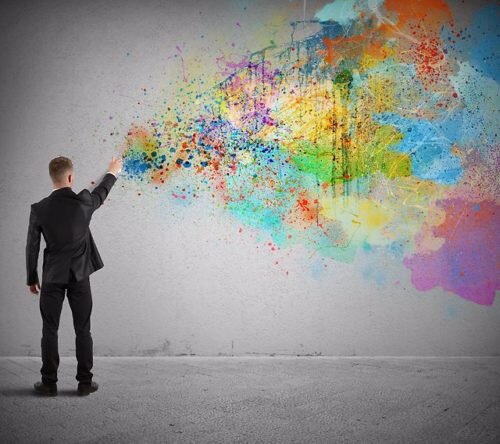Creativity at Work - What Robots Can't Do
Did you know the US is currently experiencing a creativity crisis?
We sure didn’t, until we started digging into all-things-creative. And it turns out, the need for creative thinking in work and learning is far greater than we thought.
Given how central creativity is to learning, development, and . . . well, everything . . . we want to share what this crisis means and what we can do about it.
Sifting through a multitude of creativity articles, we came across some disheartening data from education researcher K.H. Kim. From 1990 to 2008, creative thinking significantly declined among Americans of all ages. Published in 2011, Kim’s comprehensive study examines creative thinking skills in K-12 students and adults. The study draws from testing scores over a period of 40 years and measures scores against the Torrance Test for creativity. Kim's findings point to what has become known as a “creativity crisis” in the United States.
And Americans’ creativity skills haven’t improved much since 2008. Kim’s most recent research shows that “outbox” thinking (i.e., fluid and original thinking), as well as “newbox” thinking (i.e., skills of elaboration and simplicity), are lower than the 2008 levels. Americans’ “open-mindedness” also has continued to decrease.
But here’s the ironic twist: As creativity is on the decline, the demand for it in the workplace is greater than ever.
In his recent Training Industry series, Stephen Cohen, shares some staggering projections on how quickly the ecosystem of the workplace and workforce are changing. With the rapid development of technology, nearly half of US jobs will be automated in 20 years. We've barely skimmed the surface of artificial intelligence, robotics, and 3D printer potential.
In an increasingly outsourced, automated, and remote workplace, encouraging creativity in employees is more important than ever.
What’s more, we have a burgeoning generation of young workers – the millennials – with a whole new set of employment expectations. As Cohen cites, by 2020 they will comprise 51% of the workforce, and by 2025, 75% of the workforce. And millennials want a work environment filled with purpose, passion, and curiosity – values that are married to creative thought and action.
With mounting data on workplace and workforce changes, it’s no surprise that both The World Economic Forum’s 2016 The Future of Jobs report and the Partnership for 21st Century Learning suggest that creativity will be one of the most necessary skills in the workplace by 2020.
So, what does this mean for those of us in learning and development?
Given the decline in creativity and the rising need for it, here are a few things all L&D enthusiasts should keep in mind:
Design learning experiences that engage learners' curiosity through discovery and action.
Design bite-sized and media-rich learning opportunities.
Encourage and develop workers’ creativity, critical thinking, and collaboration skills. These skills are likely to pay greater dividends than we can imagine.
Empower leaders to embody their creativity. If leaders aren’t owning their creativity, it's hard to promote it in the workplace.
Understand the science of creativity. We need to explore and practice what we know about creativity at work and at home.
There is no doubt that the workplace is changing rapidly. But there’s hope. After all, humans have proven since time immemorial that we have vast creative potential, especially in the face of change.
It’s simply time to put this potential to use again.



